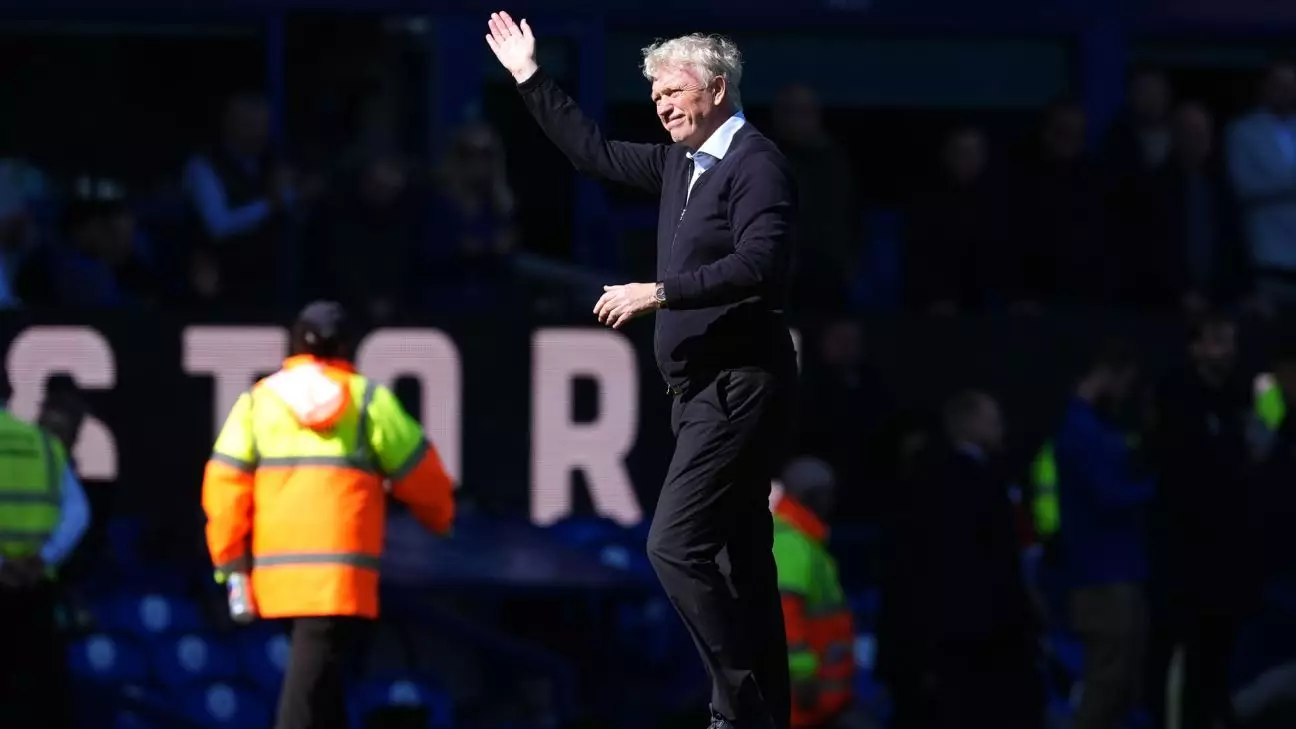As Everton FC prepares to bid adieu to Goodison Park, a stadium that has stood as a beacon of football tradition for 133 years, the air is thick with nostalgia. This weekend marks an emotional chapter, not just for the fans but for the entire footballing community associated with the club. Manager David Moyes, who has experienced the highs and lows of Everton’s storied history, encapsulated the sentiment perfectly when he described the occasion as poignant. The farewell to “The Grand Old Lady” is a heartfelt tribute to a ground that has witnessed countless memorable moments.
Yet, amid the wave of nostalgia lies the pressing challenge of focusing on the present. The match against the already-relegated Southampton presents an opportunity for Moyes and his players to not let the weight of history distract them from securing a much-needed victory. It’s a symbol of moving forward, as Everton gears up to transition to their new home at Bramley-Moore Dock.
Building Legacies: The Moyes Era
Since his appointment in 2002, Moyes has transformed Everton from a mid-tier team into a formidable force that regularly takes on the premier clubs in England. His tenure has been marked by resilience and growth, contrasting with the club’s prior struggles. Not only has he fostered talent and instilled a fighting spirit, but he has also crafted an identity for the team that resonates with its passionate fanbase.
As he prepares for this emotional farewell, Moyes emphasizes the wealth of history and the collective memories built within these walls. His humility shines through when he admits that so many remarkable figures in Everton’s history know the ground better than he does. This acknowledgment does more than honor the legends who’ve come before; it highlights the interconnectedness of the club’s past, present, and future.
Embracing Change: The Future Ahead
While the farewell to Goodison Park is undoubtedly bittersweet, there’s a palpable sense of excitement surrounding the future. Moyes expresses hope, reminding fans that the new stadium represents growth and opportunity. It symbolizes a turning point for the club—one that has long been anticipated by the Everton faithful. The promise of a “bigger and better future” is not just a hopeful statement; it encapsulates the ambitions of a club eager to reclaim its status among the elite.
Moyes recalls his first game at Goodison Park against Fulham, a match that initiated his long, fruitful journey with the club. Reflecting on his beginnings, he recognizes the importance of the support he received, enabling him to imbue his style of management into the team. This highlights the broader theme of relationships—between players, managers, and the fans—that have fortified Everton’s enduring legacy.
Goodison Park: A Home Like No Other
For the players and fans who have called Goodison Park home, the stadium is steeped in a significance that transcends sport. It has been a crucible for unforgettable victories and heart-wrenching losses alike, where emotions ran high in the stands. As the final whistle blows this weekend, it won’t just signal the end of a match—it will mark the closing of a chapter filled with love, pain, and shared experiences.
In this light, the farewell isn’t merely about the bricks and mortar of the stadium; it is about the stories etched into its walls and the feelings shared among fans. As Moyes encourages his players to remain focused on the game against Southampton, the truth remains that this match is about more than just three points. It is a celebration of a remarkable journey through time, as Everton prepares to enter its next exciting phase.

